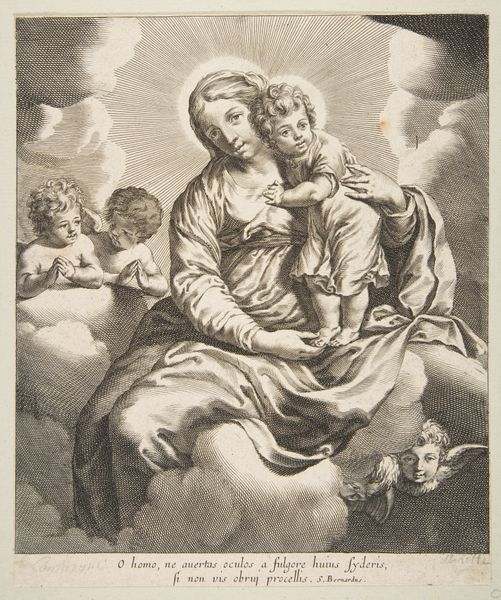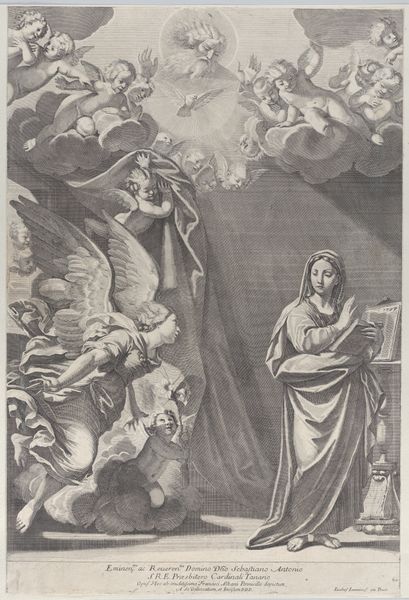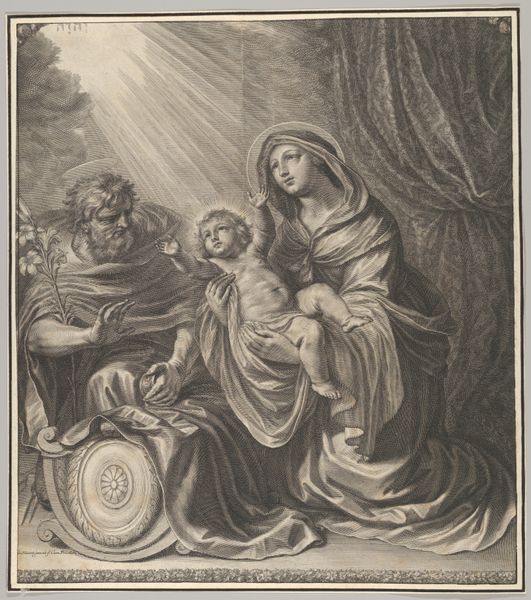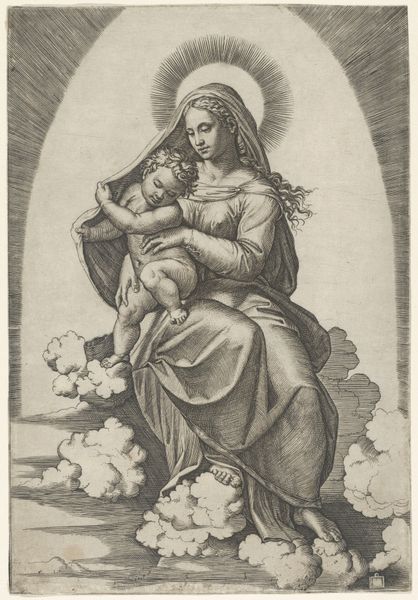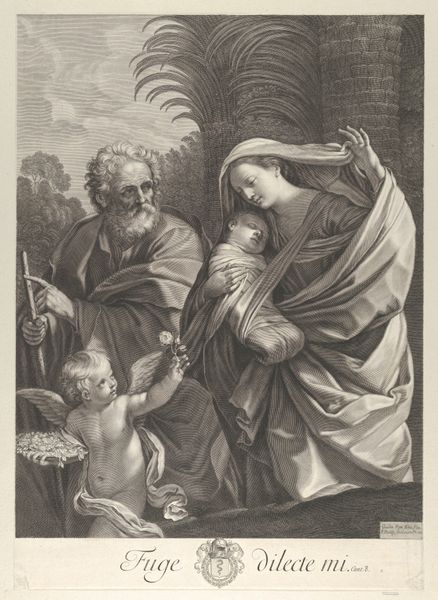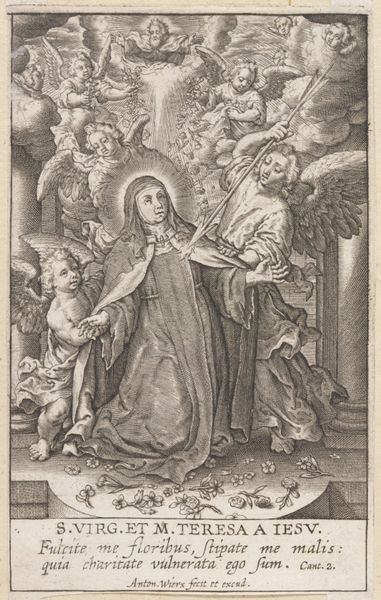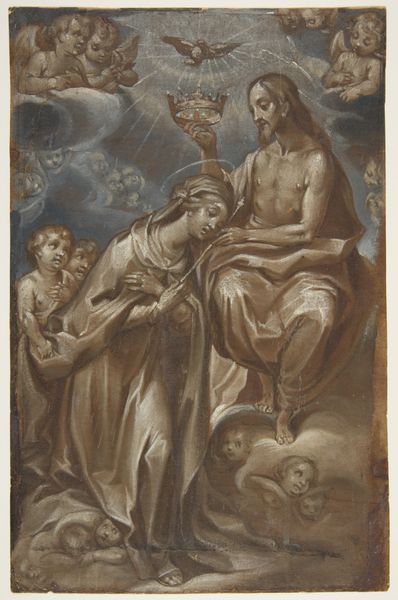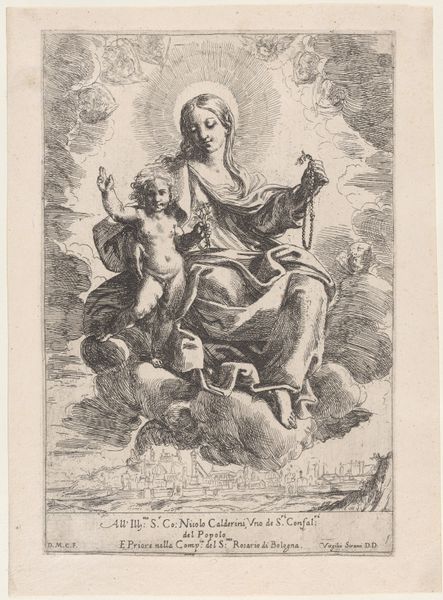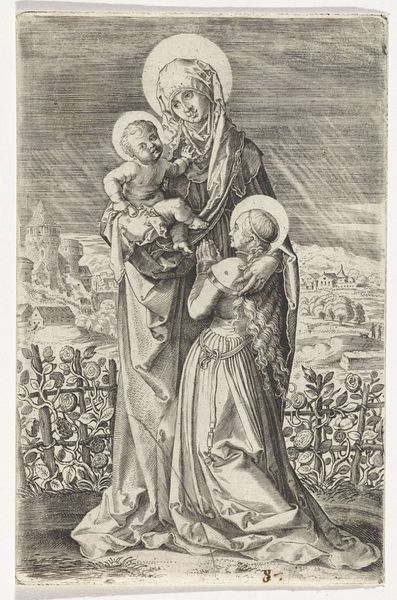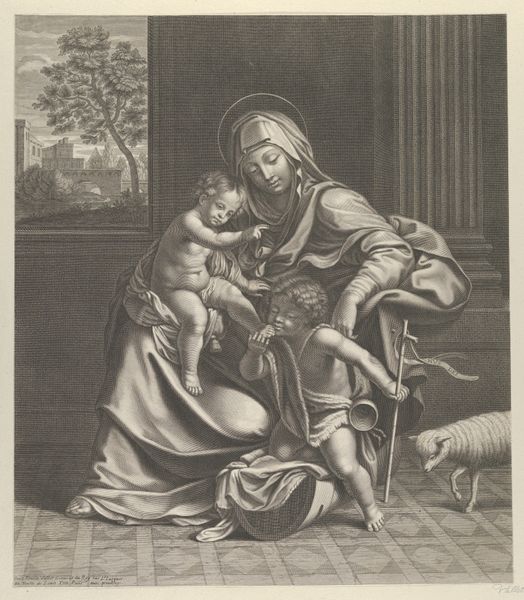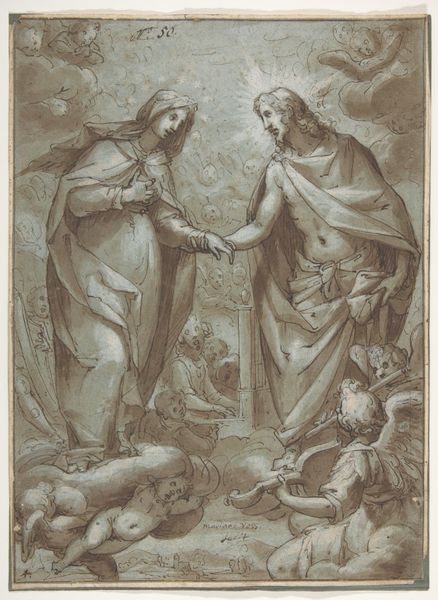
drawing, print, engraving
#
portrait
#
drawing
#
baroque
# print
#
madonna
#
child
#
portrait drawing
#
history-painting
#
engraving
#
virgin-mary
Dimensions: Sheet: 15 3/4 × 14 1/4 in. (40 × 36.2 cm)
Copyright: Public Domain
Curator: Look at this baroque engraving by Grégoire Huret, circa 1660. It depicts the Virgin and Child surrounded by cherubs’ heads. It’s held at the Metropolitan Museum of Art. What's your first take? Editor: An overwhelming sense of... cherubic presence. There are so many of those little faces peering out! Beyond that, I am struck by the textural richness, particularly in the drapery and the swirling clouds. Curator: Absolutely. Consider the process of creating such detail in an engraving. Huret would have used various tools to incise lines into the metal plate, controlling the depth and thickness to achieve different values and tones. The skill involved is astonishing! And how do you see it fits into the social context of its time? Editor: From a formal perspective, it aligns perfectly with the Baroque aesthetic, it employs dynamic composition, dramatic lighting, and the figures have a certain idealized beauty. Note the Madonna’s gently inclined head, the soft chiaroscuro that models their forms. It’s very emotive. Curator: Indeed. Religious art often served as propaganda, especially during periods of conflict. Images like this reinforced the power and authority of the Church while simultaneously offering comfort and hope to the masses. But the materials and labor also tell a story. Who would have been able to afford such things, and who benefited financially from their distribution? Editor: It’s the balance that really grabs me though. The careful placement of each cherub, each fold of fabric, leads the eye on a choreographed dance. Curator: But we should consider the broader availability of prints like these in comparison to paintings, and to their impact on a wider audience. This speaks volumes about changes in artistic production. Editor: Fair point. But let’s not disregard the way Huret's engraving technique captures light and shadow! It creates a tangible sense of the divine presence. Ultimately, for me, this engraving displays visual artistry as a compelling arrangement of forms, skillfully articulated to evoke emotion and devotion. Curator: I appreciate that take. But thinking about it, it reminds me to investigate further into the relationship between religious commissions, workshop practice, and the economy of devotional images in 17th-century France. Editor: Well, I feel I see the artwork better having this exchange with you, now, but for my eye it will remain beautiful in the end.
Comments
No comments
Be the first to comment and join the conversation on the ultimate creative platform.
